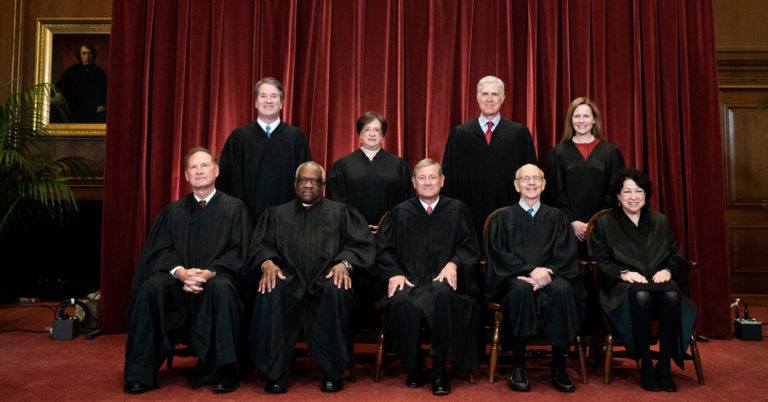

Justice Alito was aghast. “Today’s decision is the third installment in our epic Affordable Care Act trilogy, and it follows the same pattern as installments one and two,” he wrote, joined by Justice Gorsuch. “In all three episodes, with the Affordable Care Act facing a serious threat, the court has pulled off an improbable rescue.”
Richard J. Lazarus, a law professor at Harvard, said the decisions “suggest that several key justices are willing to temper their views to join the chief’s longstanding battle to have the court decide cases more narrowly and with a more unified voice.”
But he added a note of caution. “What remains to be seen,” he said, “is whether, notwithstanding the chief’s best efforts, his battle to promote a nonpartisan image for the court is ultimately a losing one.”
So far this term, the court’s three Democratic appointees have voted with the majority 73 percent of the time in divided cases, slightly ahead of the 72 percent rate of the six Republican appointees. In the term that ended last year, the gap was 14 percentage points in favor of Republican appointees.
The change may be explained by strategic voting. The court’s Democratic appointees have not hesitated to join unanimous decisions with conservative outcomes, as labeled by the Supreme Court Database at Washington University. The percentage of liberal decisions in unanimous cases so far this term is just 30, the lowest since at least 1953.
But the story changes in divided cases, where 64 percent of decisions have been labeled liberal, the highest since 1968.
“Going into this term,” Professor Epstein said, “the expectation was a bunch of divided decisions with the three Democratic appointees getting the short end of the stick. So far that prediction is way off the mark. In divided cases, the Trump appointees have moved the court to the left. If anyone got the short end of the stick, it’s this year’s most conservative justice, Alito.”